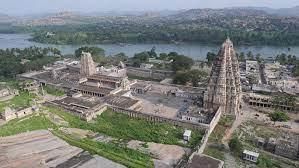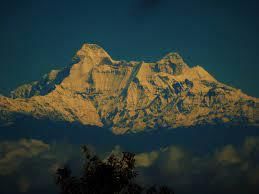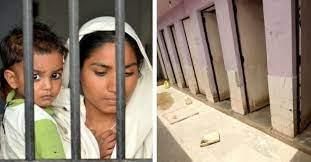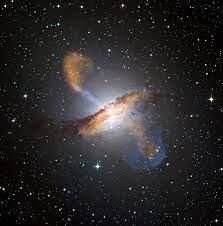UPSC Daily Current Affairs- 28th May 2024 | Current Affairs & Hindu Analysis: Daily, Weekly & Monthly PDF Download
GS-I/Indian Architecture
Restoration of Virupaksha Temple Pavilion
Source: Indian Express

Why in News?
The Archaeological Survey of India (ASI) is about to start restoration work on the collapsed saalu mantapa or pavilion (a type of Mandapa) at the renowned Virupaksha temple. This temple, part of the Group of Monuments at Hampi, is recognized as a UNESCO World Heritage Site.
What are the Key Facts About Virupaksha Temple Hampi?
- Virupaksha Temple is the 7th-century Shiva temple in Hampi, Central Karnataka.
- Lord Virupaksha, also referred to as Pampapathi is the main deity in Virupaksha Temple.
- The Virupaksha Temple was built in the Vijayanagara style of architecture and was built by Lakkan Dandesha, a nayaka under the ruler Deva Raya II, also known as of the Vijayanagara Empire.
GS-I/Art & Culture
Hampi Virupaksha Temple
Source: Indian Express

Why in News?
A section of the Virupaksha temple in Karnataka collapsed due to heavy rains. Situated at the historical site of Hampi, the temple’s pavilion, or saalu mantapa, was damaged. Some conservationists blamed Archaeological Survey of India (ASI) officials for allegedly neglecting its protection and conservation.
Background
- A nationally protected monument, the temple is believed to have its origins in the 7th century.
Key Takeaways
- Virupaksha Temple is located in Hampi in the Vijayanagara district of Karnataka, India. It is part of the Group of Monuments at Hampi, designated as a UNESCO World Heritage Site.
- The temple is dedicated to Lord Shiva, known here as Virupaksha/Pampa pathi, as the consort of the local goddess Pampadevi who is associated with the Tungabhadra River.
- Despite legends about its origins going further back, the Virupaksha temple gained prominence and underwent extensive expansion in the 14th century during the Vijayanagara Empire (1336 to 1646).
- Founded by Harihara I of the Sangama dynasty, the Vijayanagara empire expanded from a strategic position on the banks of the Tungabhadra river to become one of the most powerful kingdoms of its time.
- The temple flourished under the patronage of the Vijayanagara rulers, who were great builders and patrons of art. It became a vital centre for the religious and cultural activities of its time.
- It is a prime example of Dravidian temple architecture, characterised by its grand gopurams (towering gateways), the shikhara towering over the sanctum sanctorum, its intricate carvings and pillared halls. Richly adorned with carvings and sculptures, the gopuram depicts various deities, mythological scenes and animals.
- Virupaksha Temple complex is surrounded by three gopuras (towers). The main tower, on the east is an imposing structure, 9 stories, 50 meters tall, built in the fifteenth century. Eastern tower forms the main entrance to Virupaksha Temple. Eastern tower has extensive craftsmanship on each of its floors featuring hundreds of Hindu gods and goddesses. The inverted shadow of the main tower falls on a wall inside the temple.
- With several other temples and structures located there, Hampi was the empire’s capital city. Hampi sits on the banks of the Tungabhadra River
GS-I/Geography
Kumaon Himalayas
Source: The Hindu

Why in News?
The Supreme Court recently halted the 90-acre project in the ecologically fragile and seismically active lower Himalayan ranges of the Kumaon hills in Uttarakhand.
Geographic Location
- Region: West-central section of the Himalayas in northern India.
- Boundaries: Extends between the Sutlej River in the west and the Kali River in the east.
- Composition: Encompasses parts of the Siwalik Range in the south and the Great Himalayas in the north, primarily within Uttarakhand, northwest of Nepal.
Major Peaks and Lakes
- Highest Peaks: Nanda Devi and Kamet.
- Prominent Lakes: Naini Lake, Sattal, Bhimtal, Naukuchiya Tal.
Key Hill Stations
- Notable Hill Stations: Nainital, Ranikhet, Almora.
Cultural Significance
- Indigenous Tribes: Home to Tharus, Bhutiyas, Jaunsaris, Buksas, and Rajiswhose.
Environmental Concerns
- Fragility: Recognized as an ecologically fragile and seismic-prone region.
Shiwalik Range
Overview
- Location: Sub-Himalayan Mountain Range stretching 1,600 km from the Teesta River, through Sikkim, Nepal, and India, into northern Pakistan.
- Alignment: Runs parallel to the Himalayan system from Haridwar on the Ganges to the Beas River.
Elevation and Composition
- Height: Average elevation ranges from 900 to 1,200 meters.
- Geology: Primarily composed of low sandstone and conglomerate hills, with solidified and up-heaved detritus from the greater Himalayan range, featuring an intermediate valley lying between the outer hills and Mussoorie.
GS-II/International Relations
BIMSTEC
Source: The Hindu
Why in News?
Recently, DD Kisan introduced two Artificial Intelligence anchors as part of its effort to revamp the television channel’s presentation.
AI Anchors: AI Krish and AI Bhoomi
- Overview:
- Names: AI Krish and AI Bhoomi.
- Languages: Capable of speaking 50 Indian and foreign languages.
- Functionality: These AI anchors work continuously, providing news updates 24/7 without stopping or getting tired.
- Accessibility: Farmer viewers across all states can access these anchors.
- Information Provided:
- Agricultural research updates (national and global).
- Trends in agriculture mandis.
- Weather changes.
- Information on government schemes.
Key Facts about DD Kisan:
- Overview:
- Establishment: The only TV channel in India dedicated to farmers, established by the Government of India on May 26, 2015.
- Objective: To keep farmers informed about weather changes, global and local market conditions, enabling them to make timely and appropriate decisions.
- Functions and Goals:
- Progressive Farming: Showcases efforts of progressive farmers to inspire and educate the agricultural and rural community.
- Holistic Development: Aims to create an environment of holistic development for farmers by providing them with necessary information and education.
- Three-Dimensional Agriculture Concept: Focuses on balanced farming, animal husbandry, and plantation to strengthen agricultural practices.
GS-II/Governance
Menstrual hygiene in Indian prisons
Source: The Hindu

Why in News?
Despite advancements in menstrual hygiene, female prisoners in India continue to face neglect, revealing systemic biases and unmet basic needs such as sanitary products and adequate facilities.
About the NCRB Data:
- According to the National Crime Records Bureau (NCRB), there are 23,772 women in Indian prisons. Of these, 77% are in the reproductive age group (18-50 years) and are likely to be regular menstruators.
- The availability of sanitary napkins has been inconsistent across different prisons, and the quality has often been unsatisfactory.
- Many States have not implemented provisions from “the 2016 Model Prison Manual”, such as supplying adequate water and washroom facilities for female prisoners.
- Overcrowding and poor socio-economic conditions further exacerbate the struggle of incarcerated women to secure basic necessities during menstruation.
About the National Menstrual Hygiene Policy:
- In 2023, India formulated this policy to recognize menstruation as a natural process requiring meaningful attention. The policy aims to ensure equity in the safe and dignified management of menstrual hygiene.
- It prioritises ensuring that all menstruating individuals, regardless of their socioeconomic status and geographical location, have equal opportunities to access and manage their menstruation safely and hygienically.
- The Ministry of Home Affairs, which influences menstrual hygiene management in prisons, is overlooked as a critical stakeholder in the policy.
The key challenge of the policy is that it identifies prisoners as a target population with compromised access to menstrual hygiene facilities but lacks a concrete action plan to enhance menstrual hygiene management in prisons.
Way Forward:
- Ensure Basic Standards of Menstrual Hygiene: The Indian government must guarantee that basic standards of menstrual hygiene for women in captivity are met consistently across all prisons.
- Implement Model Prison Manual 2016: The government must ensure that all States adhere to the recommendations outlined in the manual, which includes provisions for adequate water and washroom facilities for female prisoners.
GS-II/Economy
Sensex & Nifty
Source: Indian Express

Why in News?
Adani Ports and Special Economic Zone Ltd (APSEZ) will be the first Adani Group company to join the Sensex at the Bombay Stock Exchange, replacing Wipro on June 24.
Background
- APSEZ and Adani Enterprises, the flagship of the Adani Group, are already part of the Nifty at the National Stock Exchange, the other stock market index that tracks the performance of a set of large and actively traded companies in the country.
About stock market and indices
- The stock market refers to public markets that exist for issuing, buying, and selling stocks. Stocks, also known as equities, represent fractional ownership in a company, and the stock market is a place where investors can buy and sell ownership of such investible assets.
- The stock market serves two very important purposes. The first is to provide capital to companies that they can use to fund and expand their businesses. By offering stock shares instead of borrowing the capital needed for expansion, the company avoids incurring debt and paying interest charges on that debt.
- The secondary purpose the stock market serves is to give investors – those who purchase stocks – the opportunity to share in the profits of publicly traded companies. Investors can profit from stock buying in one of two ways. Some stocks pay regular dividends (a given amount of money per share of stock someone owns). The other way investors can profit from buying stocks is by selling their stock for a profit if the stock price increases from their purchase price.
- Most of the trading in the Indian stock market takes place on its two stock exchanges: the Bombay Stock Exchange (BSE) and the National Stock Exchange (NSE). The BSE was established in 1875. The NSE was founded in 1992 and started trading in 1994.
- Both the Sensex and Nifty are tools/index by which traders and market participants measure the domestic market’s performance.
- Launched in 1986, the Sensex is the country’s oldest and most tracked index. It is designed to measure the performance of the 30 largest, most liquid, and financially sound companies across key sectors of the Indian economy that are listed at BSE Ltd.
- Among the companies that are part of the Sensex are Reliance Industries, ICICI Bank, and ITC Ltd.These companies are selected to represent the broader Indian equity marketplace. As such, even though the Sensex is composed of only 30 stocks, investors make decisions to buy or sell based on the movement of the Sensex.
- The Sensex is reconstituted biannually, in June and December of every year.
How is Nifty different from Sensex?
- While the Sensex constitutes 30 companies trading on the BSE, the Nifty 50 is a broad-based index consisting of 50 blue chip large and liquid stocks traded on the National Stock Exchange of India (NSE).
- The Nifty 50 was started in November 1995.
GS-III/Defence
Extending Tenure of Current Army Chief
Source: HT

Why in News?
The Appointments Committee of Cabinet (ACC), chaired by the Prime Minister, has approved a rare one-month extension in service for the current Chief of the Army Staff (COAS), General Manoj Pande.
About
- This is only the second such extension granted in over five decades, the first being to General GG Bewoor, who succeeded Field Marshal SHFJ Manekshaw as army chief in 1973.
- The ACC approved the extension of current COAS service for one month beyond his normal under Rule 16 A (4) of the Army Rules 1954 which deals with retaining officers on the grounds of “exigencies of services”, with the final decision resting with the Central Government.
- The COAS is the highest-ranking officer in the Indian Army, appointed by the ACC.
- The COAS serves as the head of the army and advises the Defence Ministry on army-related matters and also serves as the key military advisor to the President of India.
- The COAS retires after three years of appointment or at the age of 62, whichever comes first.
GS-III/Space Technology
Astronomical Transients
Source: TH

Why in News?
Recently, Indian-American astronomer Shrinivas Kulkarni was awarded the 2024 Shaw Prize for Astronomy for his work on the physics of astronomical transients.
About
- Astronomical transients are celestial objects or phenomena that change their brightness over a relatively short period of time, as compared to longer periods of time over which stars and galaxies change and develop.
- Studying these energetic, short-lived cosmic events could unlock secrets of the universe's most powerful objects and physical laws. Some of the different types of astronomical transients are:
- Supernovae: When the cores of massive stars collapse due to the depletion of fusionable elements, their outer layers explode, releasing immense energy and briefly outshining their entire host galaxy.
- Active galactic nucleus (AGN): Supermassive black holes at the cores of massive galaxies sometimes actively consume surrounding matter. This interaction causes the matter to emit light with varying brightness.
- Fast radio bursts (FRBs): FRBs are powerful bursts of radio waves that can release as much energy in a few thousandths of a second as the sun emits in three days.
GS-III/India and its Neighbourhood
Launch of RuPay Services in Maldives
Source: IE

Why in News?
The Maldives will soon introduce India's RuPay service in the country.
About
- RuPay is the first-of-its-kind domestic Card payment network of India, with wide acceptance at ATMs, Point of Sale (POS) devices and e-commerce websites across India.
- RuPay is a product of National Payment Corporation of India (NPCI), the umbrella organization that powers retail payments in the country.
- NPCI is a "Not for Profit Company" under the Companies Act.
- The Payment and Settlement Systems Act, 2007, gave authority to the Reserve Bank of India (RBI) and Indian Banks’ Association (IBA) to establish a safe electronic payment and settlement system in India.
- NPCI International Payments Ltd (NIPL) is the international arm of (NPCI), established in 2018 to export India's digital payment solutions like RuPay and UPI globally.
- RuPay has launched various card variants catering to the different segments of society.
- RuPay is a product of National Payment Corporation of India (NPCI), the umbrella organization that powers retail payments in the country.
- RuPay's transactions are already accepted in Singapore, Bhutan, UAE, Bahrain, and Saudi Arabia.
|
38 videos|5293 docs|1118 tests
|
FAQs on UPSC Daily Current Affairs- 28th May 2024 - Current Affairs & Hindu Analysis: Daily, Weekly & Monthly
| 1. What is the significance of the restoration of the Virupaksha Temple Pavilion in Hampi? |  |
| 2. How does the launch of RuPay services in Maldives benefit both countries? |  |
| 3. What are some key points about menstrual hygiene in Indian prisons? |  |
| 4. What is BIMSTEC and how does it promote regional cooperation? |  |
| 5. What are some key factors to consider when extending the tenure of the current Army Chief? |  |
















